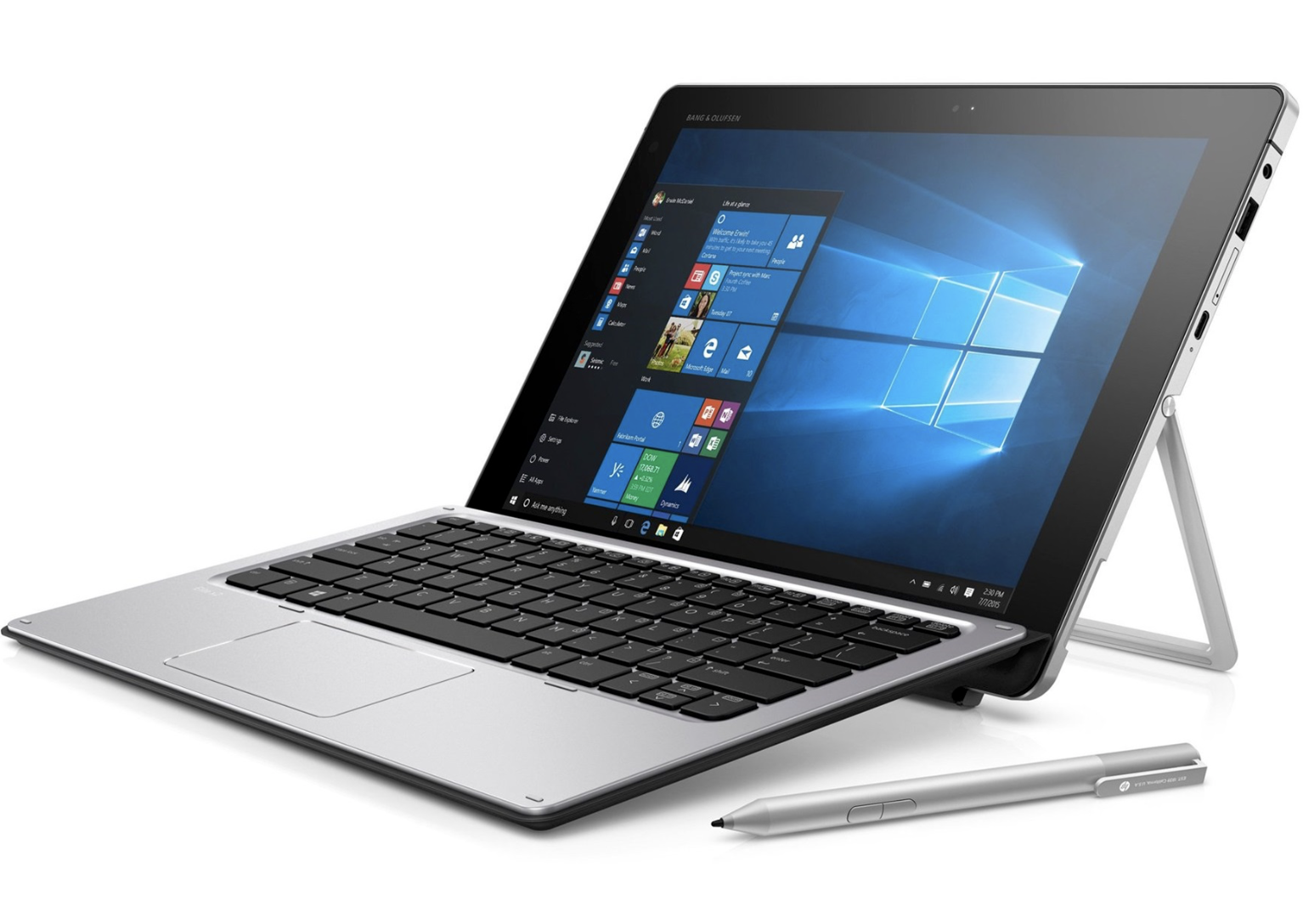There hasn’t been a lot of bright spots in the PC industry the last few years. With year-over-year shipment declines, things can often seem a little bleak. But one PC category enjoying strong growth is the convertible notebook. In 2017 the convertible category grew by 28% year over year at the worldwide level. Compare that to traditional notebooks that declined by nearly 4% and traditional desktops that declined by more than 6%. Even more notable: The convertible category’s five-year compound annual growth rate (CAGR) through 2017 was 72%.
Old School Form Factor
Convertible notebooks have a special hinge that let a user “convert” from a traditional clamshell orientation, rotating the screen all the way around into a tablet-like configuration. The form factor itself has been around for a very long time. The first convertibles came on the scene when touch was effectively a bolt-on feature of Windows, and as a result, they were slow to catch on with a mainstream audience.
The category saw some increased interest when Microsoft leaned into touch with the ill-fated Windows 8. However, that OS was very much a reaction to the rise of the tablet. Or, more specifically, the iPad. So while some PC vendors were experimenting with convertibles, much of the industry’s focus was on what we now call detachables, which are devices with a removable first-party keyboard. Led by Microsoft’s push into hardware with the original Surface, detachables seemed at the time a much more sensible response to the iPad. They focused on being a good tablet most of the time and could function as a notebook when you attached a keyboard. The problem with the convertibles of that time was that while they were good notebooks, they made lousy, oversized tablets.
True Believers: Lenovo and Best Buy
Between 1999 and 2006 convertibles grew from a 20K unit per year market to one that moved about 900K units. From 2006 until 2011, volumes increased to well over one million units per year. In 2012, the year Microsoft launched Windows 8, volumes dropped dramatically, down to about 800K units, before rebounding in 2013 to over 2.2 million units. Lenovo owned nearly 39% of the market that year and enjoyed a year-over-year shipment growth of 254% versus a market increase of 174%.
And while other vendors chased Microsoft’s Surface with their versions of detachables, driven in part by strong detachable forecasts by firms such as IDC, Lenovo continued to argue-both in private and in the market-that the convertible also represented a strong opportunity. In 2014, the convertible market doubled again to more than 4.8 million units (Lenovo owned 38%). The company’s market share in the category peaked at 42% in 2015 on total market shipments of over 7 million units. By this time, HP, Dell, and other PC vendors had recognized the opportunity and shifted more resources toward convertibles.
By 2017, the form factor had very much come into its own. Silicon advances meant convertibles could be increasingly thin, and as the tablet wave receded, more home and commercial PC buyers realized that the convertible’s ability to be a great notebook and a serviceable tablet was what they needed. In 2017 the total market reached 12.2 million units, led by Lenovo, HP, and Dell. (It’s worth noting that during that same year, detachables grew to 21.9M units, led by Apple, Microsoft, and Samsung.)
While Lenovo’s commitment to the convertible form factor was key, there was another instrumental player in the growth of the convertible market: Best Buy. The giant U.S. retailer showed interest in both detachables and convertibles, but saw the latter as the larger opportunity, and pushed its vendor partners to help it grow the category. Since 2014, the U.S. region has represented anywhere from 40 to 49% of the worldwide market for convertibles, and Best Buy has moved a sizeable portion of that total each year.
Strong ASPs and a Bright Future
So, in a market where most categories are trending downward, convertibles have been the rare growth story. But what makes convertibles even more interesting to the PC industry is the fact that they also tend to carry a notably higher average selling price (ASP) than most other PCs. For example, in 2017 the worldwide ASP for a convertible was $796, versus $645 for a traditional notebook and $505 for a tradition desktop. The only PC form factor with a higher ASP in 2017 was the ultraslim category at $936.
And the convertible category shows no signs of slowing down. Most of the major PC vendors continue to push new products here, and IDC shows continued strong growth throughout the five-year forecast. In fact, IDC’s latest numbers show convertible with the strongest five-year CAGR in the PC market at 10%. By 2022 the category should grow to nearly 20 million units per year.
And honestly, this may be too conservative. Many in the industry believe that at some point in the future, the bill of materials on a convertible will drop low enough to let vendors turn that all but the cheapest notebooks into convertibles. If that happens, these numbers will be much higher, although the resulting ASPs will undoubtedly be much lower. Either way, I look forward to seeing where the industry takes this form factor next.

it’s awesome article. I look forward to the continuation.
Very well presented. Every quote was awesome and thanks for sharing the content. Keep sharing and keep motivating others.
There is definately a lot to find out about this subject. I like all the points you made